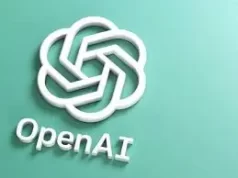

It’s becoming increasingly difficult to differentiate between real and fake images and information in this age of AI. According to a study by the Pew Research Center in 2019, 61% of Americans believed it was too challenging for the average person to recognize manipulated videos and images. This was before generative AI tools became readily available to the public. In August 2023, Adobe reported that one billion AI-generated images were produced with Adobe Firefly, a mere three months after its launch.


Join our Telegram Channel for Updates
Google Deep Mind has announced the beta version of SynthID as a response to the growing use of AI images. SynthID is designed to watermark and identify AI-generated images by embedding a digital watermark into the pixels of an image. While imperceptible to the human eye, the watermark can be detected for identification purposes.
CHECK: Master ChatGPT Now or Miss Out on $800,000-A-Year Jobs
According to Kris Bondi, who is the CEO and founder of Mimoto, a company that focuses on proactive detection and response in cybersecurity, Google’s SynthID is a step in the right direction, but it’s not a complete solution for the issue of deep fakes.
Kris Bondi, founder, and CEO of Mimoto, emphasized the continuous evolution of tactics and technologies used by bad actors, including the creation of deep fakes. Bondi believes that the cybersecurity industry needs a flexible and collaborative approach to address this issue, surpassing the technology used by bad actors.
Ulrik Stig Hansen, co-founder of Encord, also acknowledged the challenge of detecting synthetic data in the future.
As per Ulrik Stig Hansen, the progress of positive applications of generative AI will be pitted against the bad guys’ exploitation of vulnerabilities. The focus will be on how fast preventative applications can advance and how regulations will shape around the space. The EU has provided some indications of how this might look like, but the key is to enable the progress of positive applications while building solid guardrails to limit misuse. To identify the origin and authenticity of images, digital watermarking is a way that Andrew Tirkel and Charles Osborne created in 1992. Although metadata is another method, it can be removed or modified, which diminishes trust in the image’s authenticity.
In an email interview, Dattaraj Rao, who holds 11 computer vision patents and is the chief data scientist at Persistent Systems, shared that watermarking has been traditionally used to safeguard image copyrights, but it can cause harm and alteration to the content. Rao mentioned that applying this method to AI-generated images, which have been utilized for quite some time now, is a significant advancement.
However, the main hurdle would be for all enterprises and users to agree on a standard for this, given that there are various formats for storing image data, including GIF, JPEG, PNG, and more. Rao added that due to the rapid evolution of AI technology, it’s only a matter of time before someone finds a way to bypass this watermark and override it, just like what happened with visible watermarks. He explained that multiple algorithms can now detect and fill the watermarked pixels of the image with the best guess colors based on surroundings.
Instead, Rao suggests a generic solution for protecting digital content using techniques like cryptography. He explained that technologies like blockchains and digital ledgers can help create a decentralized, immutable register for digital content so you know the complete lineage for any image or Word document on the internet. However, developing the standard and getting it endorsed globally will be a challenge. In 2023, seven leading AI companies including Google and OpenAI pledged to create tools to watermark and detect AI-generated text, videos, and images. Futurist Neil Sahota added that we should equip more people on how to verify the authenticity of images to ensure accuracy and suggested that physical watermarks using ultraviolet ink can’t be spoofed as easily as e-watermarks.
Table of Contents
Google to Curb fake Ai Images with this New Tool
Google to Curb fake Ai Images with this New Tool
Google to Curb fake Ai Images with this New Tool
Google to Curb fake Ai Images with this New Tool
Google to Curb fake Ai Images with this New Tool
Google to Curb fake Ai Images with this New Tool
Google to Curb fake Ai Images with this New Tool







